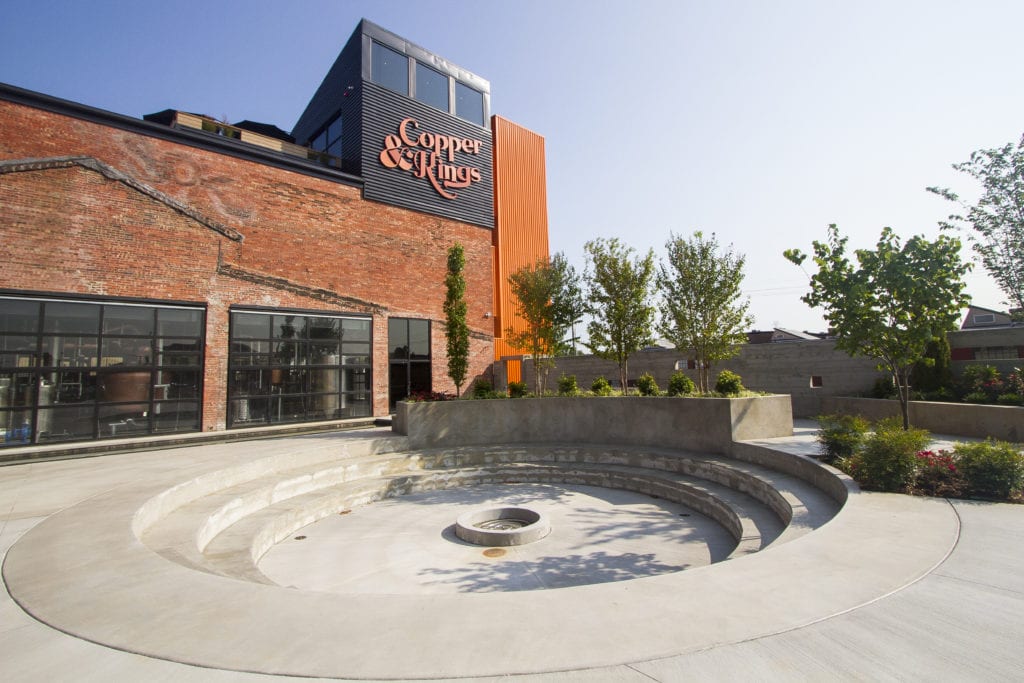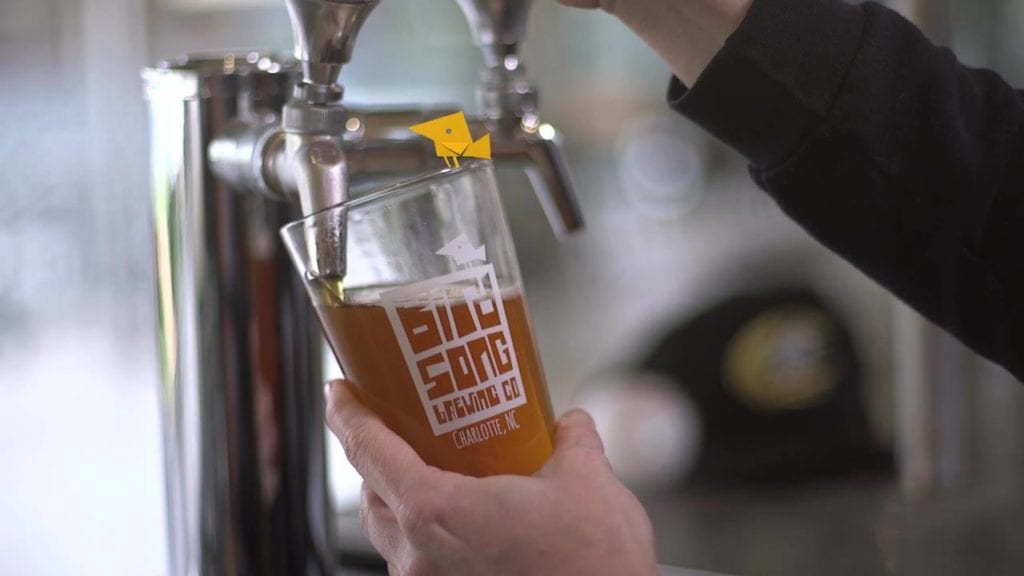Designing for Destination Drinkers: Sustainable Breweries and Distilleries
Photo Caption: Alex&nder at Copper & Kings in Louisville, Kentucky.
Skift Take
As consumer interest in sustainability and ingredient sourcing grows, for these two Southern beverage-makers, eco-conscious creation doesn't stop with their products.
There comes a time in many a sipper’s life that they must make their way to the source, and when it comes to beer and spirits, those sources are more and more becoming destinations for the discerning traveler.
It’s not just about what’s in the can or what’s in the glass — modern consumers are intrigued by what’s behind it, interested in learning about the people who make their favorite beer or whiskey, and the process behind the bottles.
Subsequently, this puts the buildings that house these distilleries and breweries in a brighter spotlight, and many beverage makers are stepping up to the challenge to create spaces that, through their very functionality, say something deeper about their approach to production and their values.
For two Southern beverage makers, a distiller in Kentucky and a brewer in North Carolina, their physical space illustrates that making good stuff goes hand-in-hand with sustainability.
“A lot of people are divorced from the reality that agriculture and alcohol are related,” said Joe Heron, co-founder of Copper & Kings in Louisville, Kentucky. “We make brandy, so we know we need grapes, and we’re all responsible for looking after the planet.”
Located in the Butchertown section of the city, Copper & King’s modern orange and black building rises out of a neighborhood that still looks as gritty as its moniker suggests. But Butchertown is also one of the hottest up-and-coming neighborhoods for food and drink, so Heron and his team wanted to stand out by creating a destination distillery that felt modern and cool, just like “the idea of making good American brandy,” he said. That desire for modernity blends seamlessly with practicing sustainability, thus creating a truly one-of-a-kind space.

Exterior view of Copper & Kings in Louisville, Kentucky
First Impressions
Visitors first entering the distillery are greeted by a butterfly garden (complete with a beehive) among all the concrete. Native plants feed pollinators and provide a visual reminder of alcohol’s connection to nature, all while practically helping with stormwater runoff in this neighborhood with aging infrastructure.
Six repurposed shipping containers surround the courtyard, housing a lounge for guests to wait for tours or to get out of hot Kentucky summer heat, restrooms, and an event kitchen. The main structure rises beyond the containers, the brick still holding testament to the building’s past through the original roof outline, but decidedly modern touches of glass and metal speak to the future of distilling, not its history, a heady thing in bourbon country.
At least one thing remains familiar: Copper and Kings employs copper stills. But, of course, they do this in a decidedly new way. The still has its own “moat” or reflecting pool, filled with circulating wastewater from the distilling process. “It’s a protective barrier to keep guests in the courtyard from touching the hot still [while still keeping the operation open and visible to the public], and in the hot summer, the evaporation from it does have some cooling effects,” Heron explained.
“We do not cost that out in any way. It’s not a cost exercise but a strategy to make better distillate," he added. In short, the sustainability measures are natural expressions of the brand, and at Copper & Kings, are geared toward customer experience and interaction. A distillery experience is more than just drinking a product of the environment, it’s guests interacting with the environment itself. And that extends all the way to the rooftop bar.
Sustainable in Charlotte
In Charlotte, North Carolina, Birdsong Brewery’s taproom features a unique piece of interactive bar artwork for customers — a solar panel connected to a tablet showing the number of trees saved through the on-site creation of energy. “This panel provides people a direct feel for what is happening on the roof above them,” says Chris Goulet, managing partner and president of Birdsong, Charlotte’s third largest craft brewery.
That roof holds a 72-kilowatt system producing 50 percent of the electricity the brewery uses in a month. Goulet said that saves the business about $1,000 month. “The payback period is less than four years. We knew we had this huge, flat roof, but it’s even producing more than we estimated it would. During peak summer hours, we are putting power back on the grid,” he said.

North Carolina's Birdsong Brewery features sustainable touches like rooftop solar panels and surprisingly effective waterless urinals.
With 12 different taps flowing in the taproom, guests can be forgiven for focusing on suds more than sustainability, but there is other evidence hiding in plain sight. The staff uses reusable nylon enclosure wraps for moving wrapped kegs and cans within the distillery, and helps collect stretch wrap from other brewers in the neighborhood, bailing it to be recycled. Then there are the composting and other recycling programs, and more efficient brewing and cleaning practices that lead to water conservation. But spend enough time in the brewery and some guests might encounter a visually apparent form of water conservation: waterless urinals.
“We found this pretty smart system,” Goulet explains, referring to the Kohler system that Birdsong uses in the restrooms. “These units use a sanitary liquid that floats on top. It actually works better. We like to illustrate that there are so many things to reduce your footprint. It doesn’t have to be difficult or huge to make an impact. Everything adds up.”
In both this distillery and brewery, it’s still all about the booze, but whether guests know it or not, the environment where it’s made and where they come to sample does have an affect on ultimately, how they view the brand. Heron is well aware of this: “The modern consumer is driven by values, then by trust for the brand that the product ‘works’ to deliver whatever the brand says it will. This building, and what we put in the glass, is the physical manifestation of those values, the best version of ourselves. We are creative, supportive of the artistic community, and connected to the environment.”
For Goulet, Birdsong’s takeaway is that it’s interconnected to the environment and his local community. “There is a core group of folks here at Birdsong, including me, that are passionate about minimizing our footprint,” he said. Beer taprooms and breweries are culturally builders of community, and that comes through in Birdsong’s building and approach. “In manufacturing if you do something well, you do it over and over. Here it’s about being aware of how we can make that something more efficient. It’s a super supportive and collegial environment.”
Cheers to that.
Stephanie Burt is the host of The Southern Fork podcast and a writer based in Charleston, SC. Her work has appeared in Saveur, CNN's Parts Unknown, Conde Nast Traveler, Gravy, and Paste, and she focuses on researching heirloom ingredients, interviewing passionate people creating good food, and when she's in the kitchen, perfecting her roasted chicken recipe.
